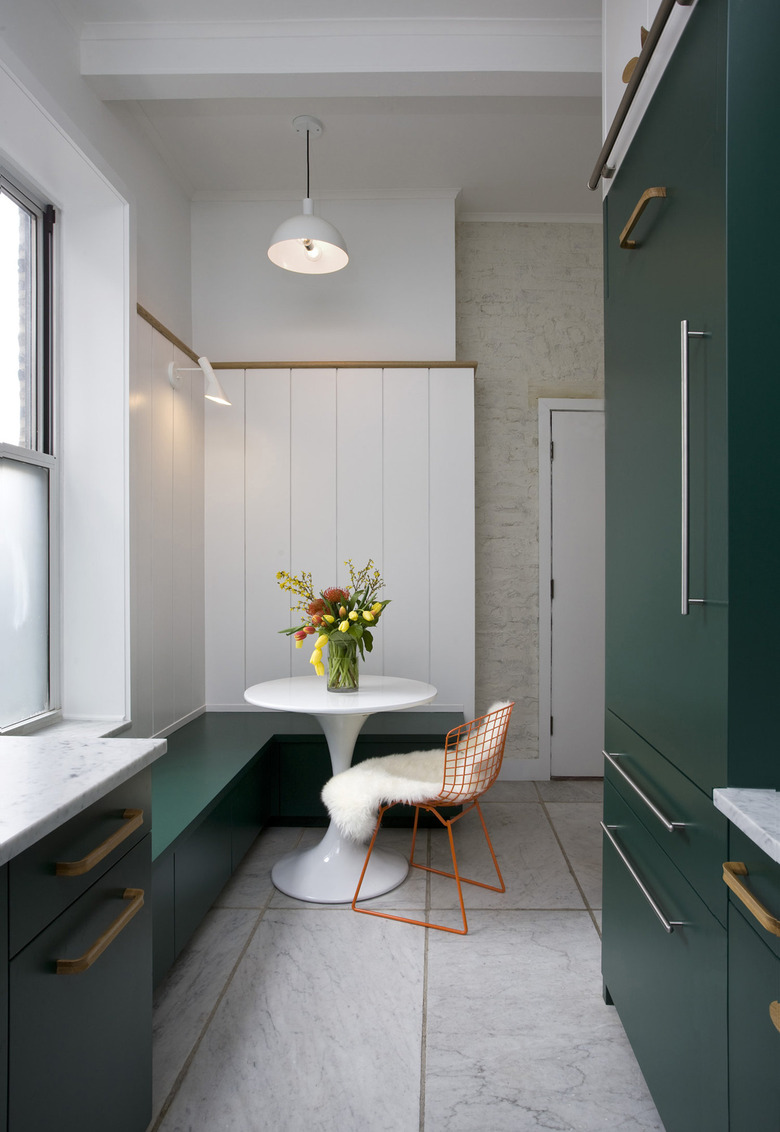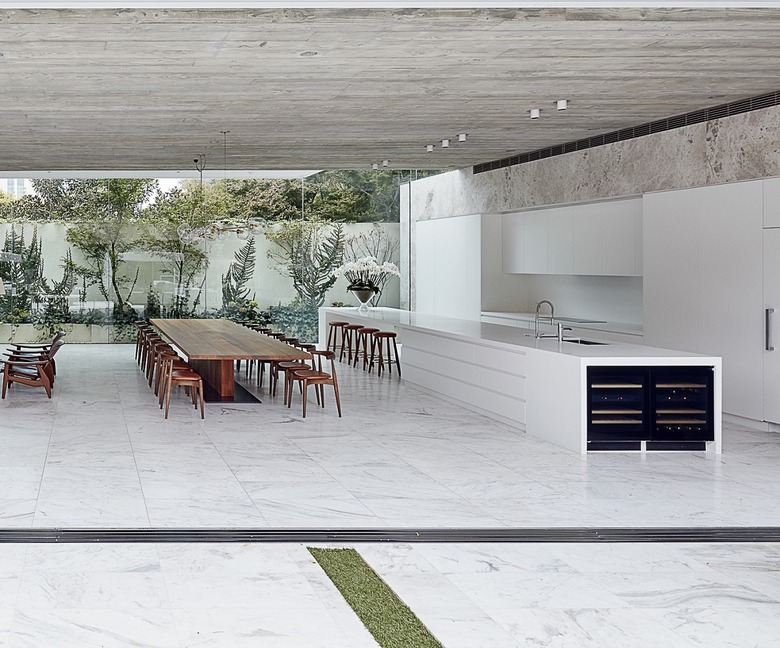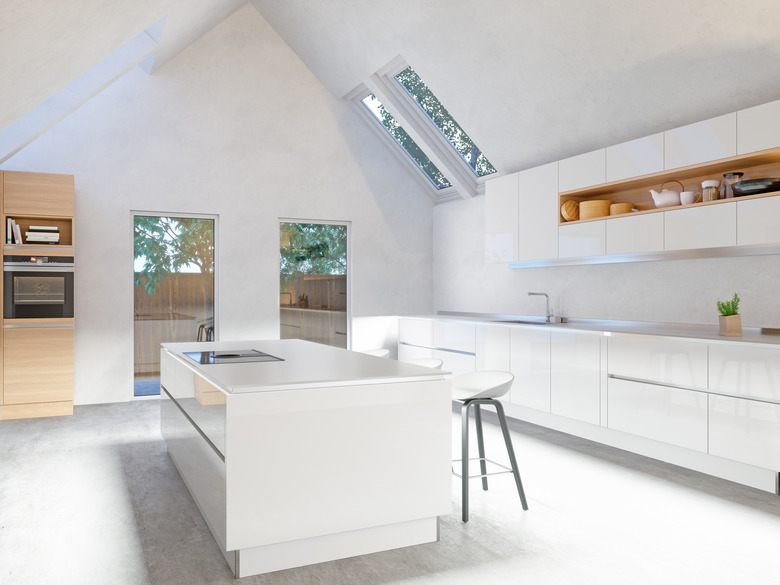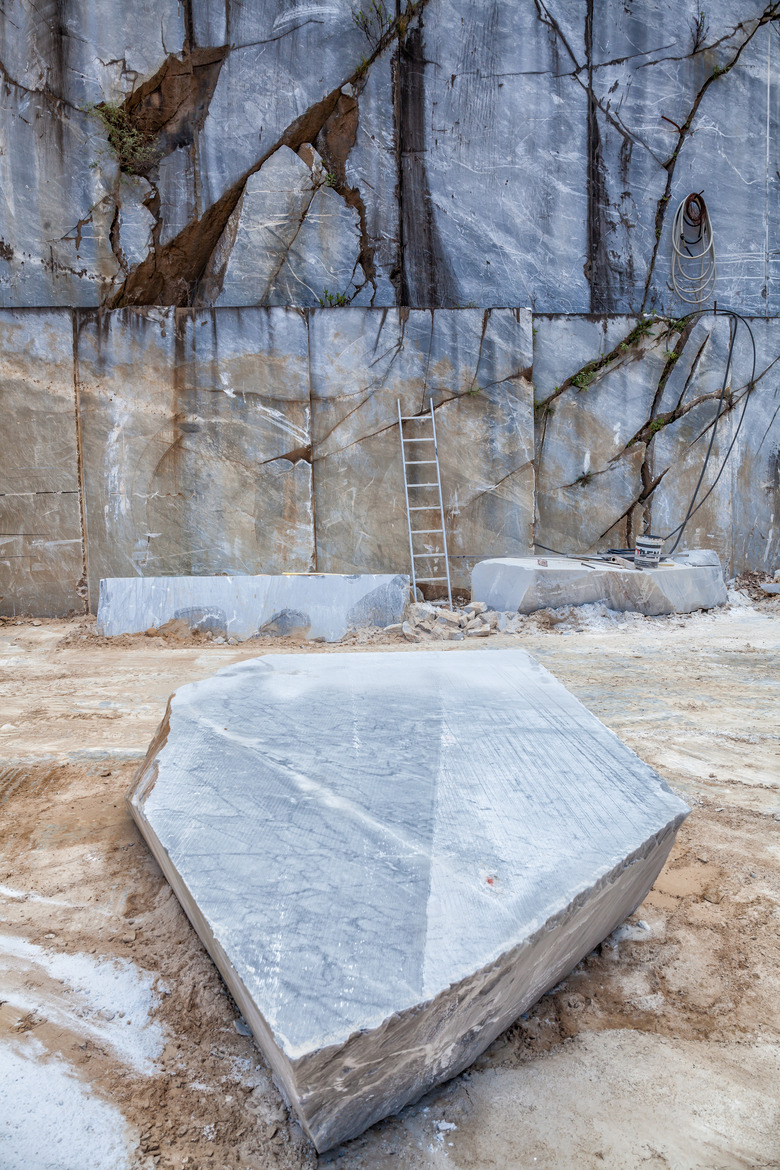Marble Kitchen Floors: What You Need To Know
There's little doubt about marble's ability to add a significant wow-factor to any space. Romans, along with countless artists and architects of the Renaissance period, clearly had an affinity for its natural beauty and splendor. Sure, using marble for kitchen countertops has basically gone mainstream at this point, but what about using marble as flooring? I mean, let's face it, the stuff isn't necessarily cheap, but with all of the vendors and varieties now available, it's totally possible to fit a gorgeous marble kitchen floor into just about any home renovation budget. So, before you do as the Romans did and use this once exclusively high-end material in a high-traffic area like the kitchen, here's what you need to know.
1. Marble changes over time.
1. Marble changes over time.
When you first think of marble flooring, bathrooms lined in veiny stone probably come to mind, but think again. The iron content in marble actually causes it to rust over time, especially when in high humidity, and yet, using marble in bathrooms and showers is somewhat common nowadays. Natural stone like marble can work just as well as kitchen flooring, developing a patina over time which adds an earthy element that will change as it ages. So, if you're considering a marble kitchen floor, the first step is to make sure you're cool with the idea of it changing throughout the years. Like any natural stone, marble will erode, and if you're not vigilant about upkeep, you can end up accelerating the process and might want to explore more low-maintenance kitchen flooring options.
2. When choosing a marble type for now, it's important to consider your future needs.
2. When choosing a marble type for now, it's important to consider your future needs.
One of the many wonderful aspects of implementing marble into your home design is that each and every piece of stone is completely one-of-a-kind, meaning no one will be able to replicate your dream kitchen. The specific type of marble you choose, whether you're drawn to more affordable Carrara or rare Calacatta, will yield different veining and coloring, plus the quality of the marble and its provenance will determine its availability and ultimate cost. Make your selection considering any future projects. Do you foresee any further remodeling down the line? If so, something more common or readily available in your area might be easier to match with your previous renovation.
3. Marble requires constant maintenance.
3. Marble requires constant maintenance.
White marble, like Carrara, is on the less expensive side (even more affordable than quartz or granite) while still creating a sense of old-world grandeur, making your kitchen appear bigger and brighter as it refracts sunlight beautifully. But do keep in mind: white marble varieties can easily stain and will require constant upkeep over darker types. Compared with granite, marble is much softer and more porous, making it more susceptible to scratches and stains. To maintain marble, whether it be countertops or tile flooring, be sure to use gentle cleaners, avoiding any acidic products that may damage the material. After cleaning, you must gently polish marble by rubbing it with a soft chamois cloth until you achieve a sheen. The final step is buffing with a high-quality car wax to protect the surface and maintain the shine. The fact that marble floors need to be cleaned and polished on a regular basis is by far the biggest downside if you want them to stay true to color and last as long as possible.
5. Well-maintained marble can add value to your home.
5. Well-maintained marble can add value to your home.
One upside to carefully caring for your marble floors over the years is that stone features kept in decent condition can significantly add to the value of your home. Well-maintained marble will make an impression on potential buyers, and realtors can easily capitalize on the air of opulence around your marble floor to potentially offset the initial investment. Low-traffic conditions might be ideal for longevity, so think about what best fits your kitchen environment. Also, dropping heavy objects onto your marble flooring can cause serious damage due to the delicate nature of this particular stone.
6. You can pick polished or matte marble ... but which is better for you?
6. You can pick polished or matte marble ... but which is better for you?
Polished marble will give you a sleeker look and its shiny high-gloss finish will reveal the true depth of color while showcasing the full character of the stone. Because it remains cool to the touch, you might prefer marble for indoor/outdoor kitchen floors in warmer climates. Alternatively, honed marble will give you a matte finish and is much less slippery. Opt for polished marble over honed for easier upkeep, or mix honed and polished tiles in the same color family to add texture and interest to floors, as strictly honed marble requires more frequent sealing and is even more porous than polished marble. However, honed marble will hide any flaws better.
7. The size of your space matters when choosing your marble type, color, and pattern.
7. The size of your space matters when choosing your marble type, color, and pattern.
No matter which type of marble you're drawn to, take the time to consider its particular color and veining and whether large or smaller floor tiles will showcase the unique pattern best for the size of the space. Large tiles, for example, will often better showcase softer and more uniform marble veins and patterns; smaller tiles, on the other hand, might be better to break up a busier pattern. The goal is to form a subtle mosaic effect with a pattern that gently flows across the room and doesn't distract from your other design features or make the room appear more cramped.
8. It's important to calculate the weight of the stone prior to installation.
8. It's important to calculate the weight of the stone prior to installation.
It should come as no surprise that marble has an extremely high density, since it is a form of metamorphic rock formed from the recrystallization of limestone that's been cooking up within the earth for millennia. Hence, it's essential to calculate the total weight of marble tile before installation to make sure an existing or proposed structure (such as your home) has enough strength to support the weight of the stone.



